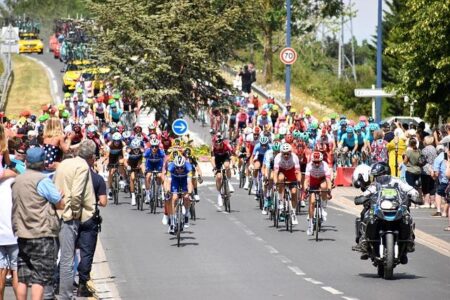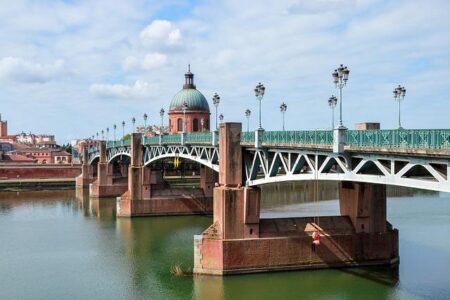Introduction
Nestled in the heart of northern France lies the Trouûˋe d’Arenberg, a section of cobbled road renowned among cycling enthusiasts as one of the most challenging and iconic stretches of the Paris-Roubaix race. This narrow, forested pathway, flanked by towering trees, has tested the world’s best riders for decades, becoming a rite of passage in the grueling quest for the coveted Paris-Roubaix title. As cyclists navigate the unforgiving stones that have seen countless battles, the Trouûˋe d’Arenberg symbolizes both the beauty and brutality of this historic race. In this article, we explore the significance of this legendary section, its impact on the riders, and why it continues to captivate spectators and participants alike.
Understanding the Trouûˋe d’Arenberg and Its Historical Significance
The Trouûˋe d’Arenberg, a legendary stretch of cobblestones located in the Arenberg Forest, looms large in the annals of cycling history. Characterized by its rough and uneven terrain, this iconic passage has become synonymous with the Paris-Roubaix race, often referred to as the “Hell of the North.” Each year, riders face its daunting embrace, which features an unpredictable mix of weather, fatigue, and fierce competition. The cobblestones themselves, some dating back to the 19th century, evoke a rich tapestry of stories, reflecting the resilience and grit required not just from the cyclists, but from the sport itself.
Riders tackle the Trouûˋe d’Arenberg not just as a physical challenge, but as a rite of passage. This segment is known for:
- Historic significance: Witnessed countless battles between cycling legends.
- Extreme conditions: Regularly impacted by rain and mud, adding to the difficulty.
- Fan engagement: Attracts thousands of spectators each year, making it a vibrant part of the race atmosphere.
This stretch of road serves as a testament to the sport’s enduring heritage, attracting both competitors and enthusiasts who seek authenticity in their cycling experiences. As riders navigate the rutted surface, they pay homage to those before them who have faced the same trials, creating an unbroken connection to the past.
The Challenging Characteristics of the Arenberg Forest Cobbles
The Arenberg Forest is synonymous with some of the most ruthless challenges that amateur and professional cyclists face during the Paris-Roubaix race. Renowned for its punishing terrain, the cobbles here are anything but ordinary. Riders navigate an unforgiving mix of protruding stones, uneven surfaces, and relentless energy-sapping vibrations. The historical significance of this section, coupled with its harrowing nature, puts it on the map as a defining moment in the race. No other stretch captures the essence of the Paris-Roubaix like the Arenberg, where technique and raw determination are paramount.
The characteristics of the cobbles themselves create a unique set of challenges for cyclists. Among the key difficulties are:
- Irregular Sizes: The cobbles vary greatly, making each pedal stroke a test of agility.
- Slippery Conditions: Rain can transform the stones into treacherous traps, increasing the likelihood of crashes.
- Physical Toll: The vibrational impact takes a toll on riders’ bodies, leading to fatigue and injury.
| Cobble Feature | Description |
|---|---|
| Surface Type | Rough, uneven stones |
| Length | Approximately 2.4 kilometers |
| Difficulty Rating | Highly Challenging |
Navigating the Trouûˋe: Tips for Cyclists Tackling the Iconic Stretch
For many cyclists, facing the Trouûˋe d’Arenberg is the ultimate test of resilience and skill. The infamous cobbles, stretching over 2.4 kilometers, demand not just physical endurance but also mental fortitude. Preparation is key, and understanding the best approach can make all the difference on race day. Consider the following strategies:
- Bike Choice: Opt for a sturdy bike equipped with wider tires (28-32mm) that can absorb the relentless jolts of the cobbled surface.
- Technique: Maintain a light grip on the handlebars and keep your body relaxed to navigate the uneven terrain with better control.
- Angling: Approach the cobbles at an angle whenever possible to reduce impact and maintain speed.
Moreover, knowing the terrain can greatly affect your performance. The Trouûˋe is not only about the cobbles but also features tricky dips and turns that can catch an unprepared rider off guard. As part of your training, consider these insights:
| Key Features | Description |
|---|---|
| Surface Condition | Varies from smooth patches to loose stones; stay alert! |
| Pavement Width | Narrow, requiring precise control and positioning. |
| Weather Impact | Rain can amplify difficulties; adjust tire pressure accordingly. |
Experiencing the Atmosphere: What Spectators Can Expect during Paris-Roubaix
The atmosphere surrounding Paris-Roubaix is electric, drawing fans to the iconic Trouûˋe d’Arenberg, where the legendary cobblestones stretch out like a challenging invitation. As cyclists navigate the punishing terrain, spectators can expect an exhilarating blend of excitement, tension, and camaraderie. With thousands of passionate fans lining the route, the air is thick with anticipation, punctuated by the cheers of supporters and the unmistakable sound of tires clattering over ancient stones. Key highlights of the experience include:
- High Stakes: Witnessing riders contend with the harsh realities of the cobbles.
- True Grit: Admiring the resilience of competitors as they tackle the notorious sectors.
- Historic Backdrop: Feeling the rich history that has made this race one of cycling’s crown jewels.
Moreover, the scene transcends mere athleticism, becoming a spectacle of culture and community. Local vendors offer traditional French snacks, while fan-favorite drinks flow freely, enhancing the spirited environment. Attendees often engage in lively conversations, sharing strategies and predictions for their favorite teams and riders. For those lucky enough to find a spot near the finish line, the opportunity to witness the culmination of this grueling race offers a moment of pure, shared exhilaration. Fill your day with unforgettable moments by considering the following:
| What to Bring | Why It’s Important |
|---|---|
| Comfortable Footwear | To navigate the rough terrain with ease. |
| Warm Layers | The weather can change quickly, especially in early spring. |
| Binoculars | For a close-up view of the action from a distance. |
| Portable Seating | To enjoy a comfortable viewing experience. |
In Retrospect
In conclusion, the Trouûˋe d’Arenberg stands as a monumental marker in the cycling world, embodying both the beauty and brutality of the Paris-Roubaix race. With its rough cobblestones and shaded tree canopy, this iconic sector tests the mettle of even the most seasoned riders. As athletes navigate its challenging terrain, they not only confront physical exhaustion but also the rich history and fierce competition that define this legendary event. The Arenberg Forest continues to captivate both participants and spectators alike, serving as a powerful reminder of the enduring spirit of cycling. As the 2023 season approaches, all eyes will be on this legendary stretch of road, where every turn and bump has the potential to alter the course of history in the sport.



